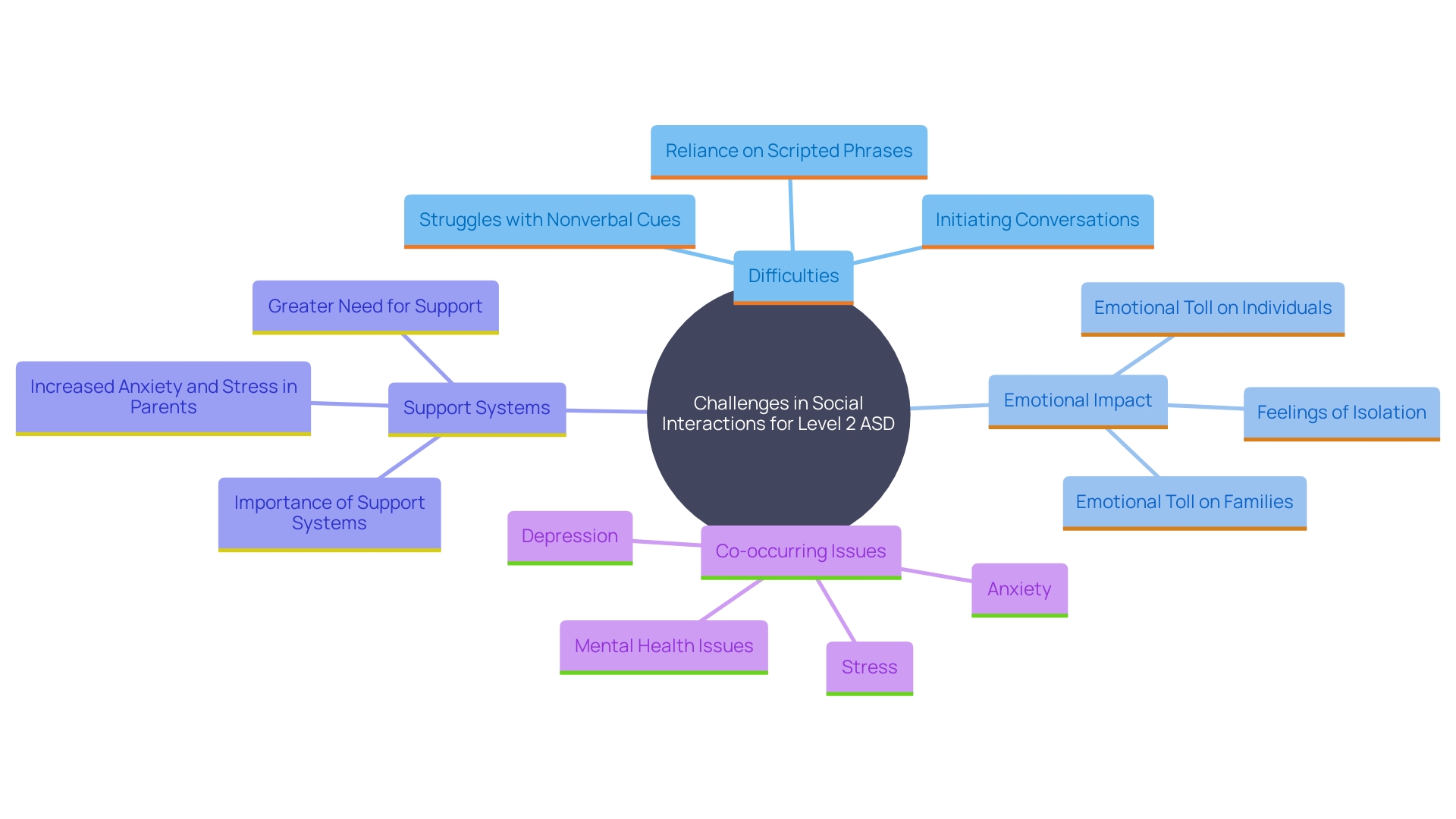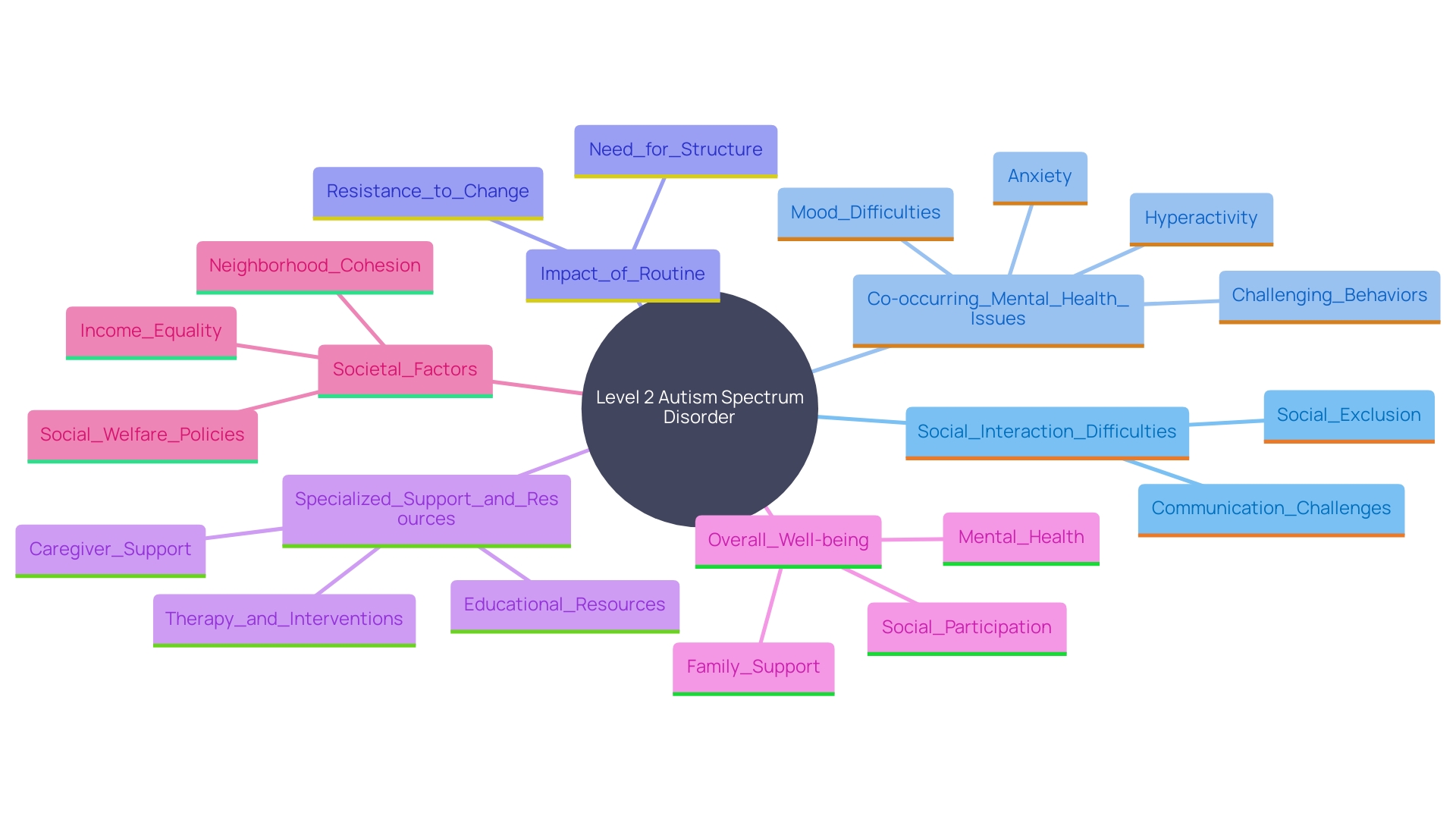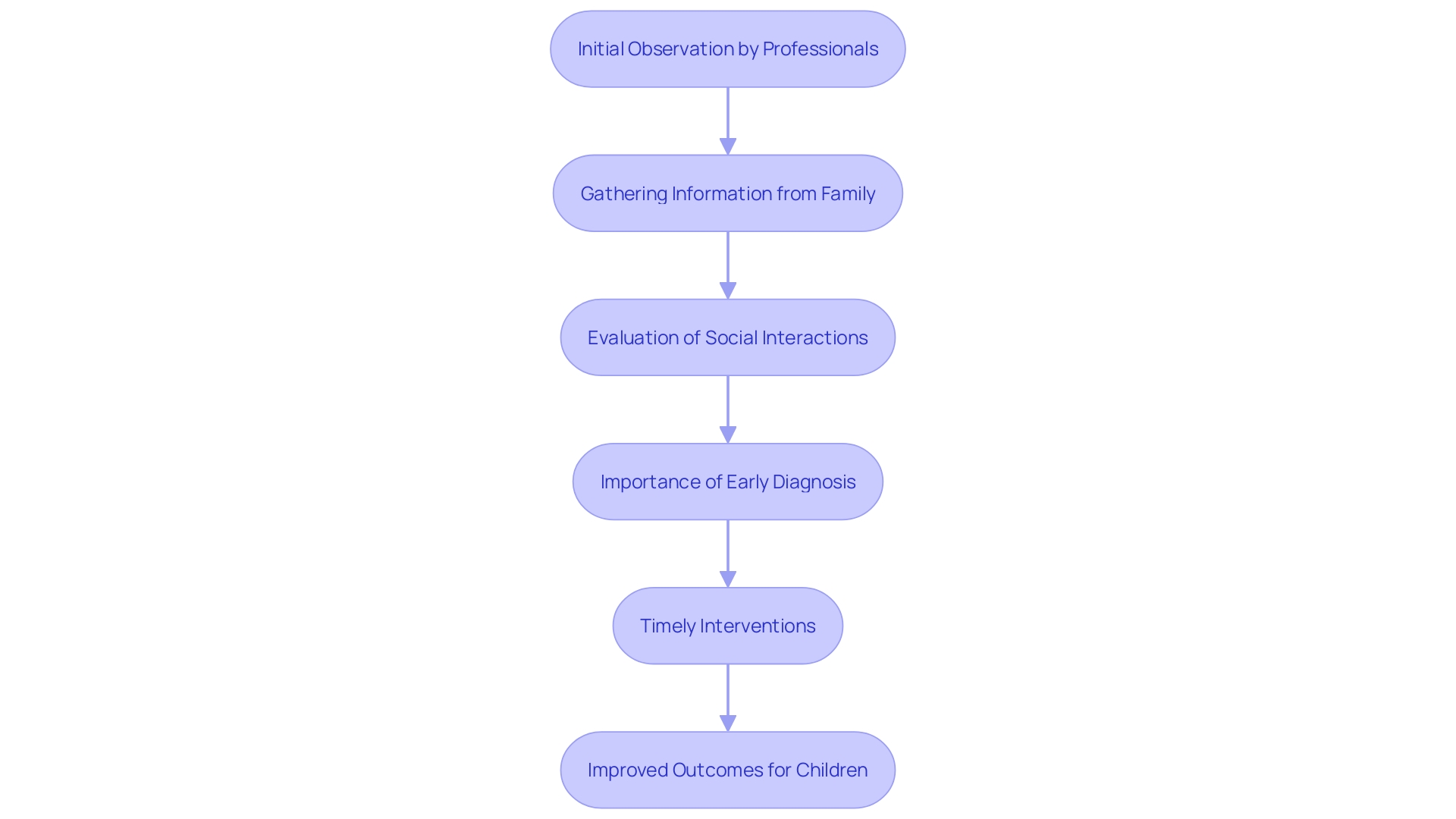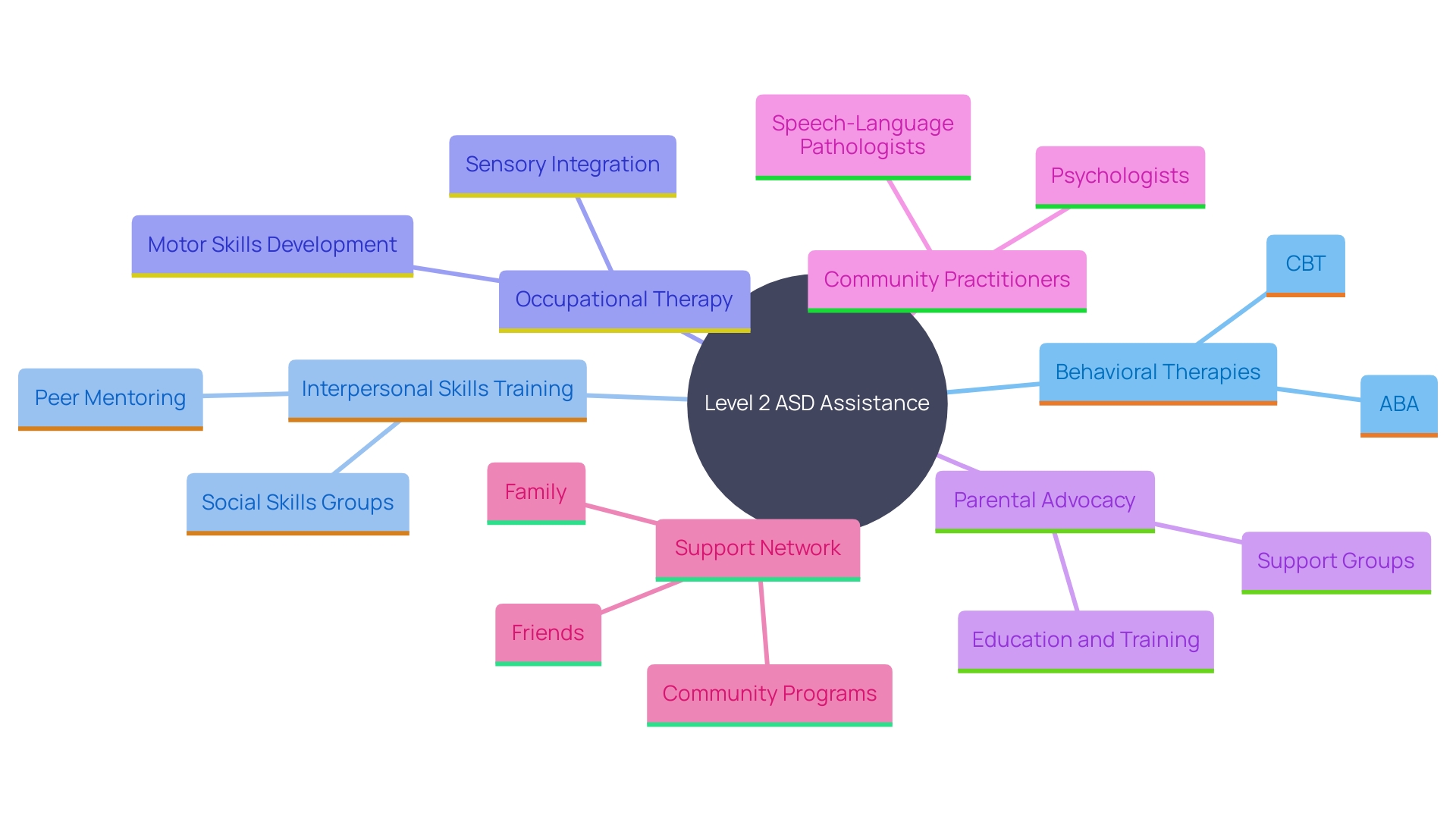Introduction
Level 2 Autism Spectrum Disorder (ASD) presents unique challenges and requires substantial support for individuals to navigate daily life effectively. From social communication difficulties to repetitive behaviors and restricted interests, each characteristic of Level 2 ASD impacts the individual's ability to interact and adapt. Understanding these challenges is crucial for parents, caregivers, and educators to provide the necessary interventions and support.
This article delves into the defining traits of Level 2 ASD, explores the profound impacts on daily life and relationships, and highlights the importance of early diagnosis and tailored intervention strategies. Through comprehensive insights and practical guidance, it aims to empower those supporting individuals with Level 2 ASD, ensuring they can foster meaningful connections and enhance the overall quality of life for their loved ones.
Characteristics of Level 2 ASD
Level 2 Autism Spectrum Disorder (ASD) is characterized by significant difficulties in interpersonal communication and restrictive, repetitive behaviors. Individuals with Level 2 ASD often need significant support to manage daily activities. These obstacles often appear as difficulties in social interactions and grasping social cues, which can result in frequent misunderstandings. For instance, maintaining conversations can be arduous due to limited eye contact and challenges in forming relationships. Research highlights that lack of effective ways to convey information can exacerbate these difficulties, making it crucial to address these barriers. Research has demonstrated that customized strategies, like Applied Behavior Analysis (ABA), can greatly enhance interpersonal abilities and interaction. Furthermore, creative evaluation techniques, such as tablet-based games, have uncovered surprising literacy skills in nonspeaking autistic individuals, indicating possible paths for improving interaction. Tackling these needs with tailored approaches can significantly enhance the quality of life for individuals with Level 2 ASD, assisting them in managing interactions and forming meaningful connections.
Social Communication Challenges
Individuals with Level 2 ASD face considerable challenges in social interactions, significantly affecting their daily engagements. Initiating and maintaining conversations can be daunting, often leading them to rely on scripted or repetitive phrases. This is compounded by difficulties in understanding nonverbal cues, such as body language and facial expressions, which are crucial for effective interaction. These hurdles can result in feelings of isolation and frustration for both the individual and their families. For instance, a study underscored that autistic mothers frequently feel judged and stigmatized for their difficulties in expressing themselves, highlighting the necessity for improved support systems. Additionally, research has shown that autistic individuals are more likely to experience co-occurring mental health issues, further complicating their social interactions. Understanding and addressing these communication barriers is essential for improving the quality of life for those with Level 2 ASD.

Repetitive Behaviors and Restricted Interests
Repetitive behaviors and restricted interests are hallmark symptoms of Level 2 ASD. These can include repetitive movements, such as hand-flapping or rocking, as well as a strong focus on specific topics or activities. In fact, a study found that 37% of autistic children showed an intense or exclusive interest in letters, compared to only 3% of non-autistic children. This focused interest can lead to extensive knowledge in particular areas, providing comfort and predictability. However, these behaviors can also interfere with flexibility and adaptability in new situations. Research shows that up to 70% of individuals with ASD face extra obstacles such as anxiety, hyperactivity, and mood difficulties, which can further affect their ability to adapt. Overall, understanding these patterns is essential for developing effective support strategies tailored to individual needs.

Impact on Daily Life and Relationships
Level 2 Autism Spectrum Disorder (ASD) can profoundly impact daily life and relationships. Individuals may struggle with typical social interactions, often feeling isolated or excluded due to difficulties in understanding social cues. Their pronounced need for routine and predictability can make transitions challenging, affecting their performance in school, work, and home environments. Research shows that up to 70% of autistic individuals experience co-occurring issues such as anxiety, mood disorders, and behavioral difficulties, further complicating their daily interactions and relationships. The lack of specialists and adequate training in autism care exacerbates these challenges, making it crucial for caregivers to understand and address the specific needs of their loved ones. As pointed out by specialists, societal and environmental factors, such as community cohesion and welfare policies, significantly influence the well-being of autistic individuals. Therefore, providing comprehensive support and resources is essential to help them thrive. This includes integrating specialized services and ensuring access to quality medical care, as highlighted by the initiatives led by institutions like Harvard Medical School.

Diagnostic Criteria and Assessment
The DSM-5 outlines the diagnostic criteria for Level 2 ASD, highlighting the necessity for substantial support in social interaction and restrictive behaviors. Accurate diagnosis involves a thorough evaluation by a multidisciplinary team of professionals such as psychologists and speech therapists. They observe behaviors, evaluate interaction abilities, and collect detailed information from family members. Research highlights the significance of early diagnosis and action, as these can greatly improve outcomes for children. For example, research indicates that early intensive behavioral interventions can result in enhancements in interpersonal interaction and adaptive behavior. However, the challenges in diagnosing ASD early remain, particularly due to the varied presentation of symptoms. The Autism Community in Action (TACA) emphasizes the critical need for timely and accurate diagnostic tools, with initiatives like NeuroQure striving to reduce the diagnostic timeline dramatically. Furthermore, it's crucial to recognize that symptoms may not completely appear until demands surpass a child's ability to manage, requiring expert observation by professionals to effectively identify communication, behavioral, and developmental levels. Ensuring early and precise diagnosis is crucial for implementing measures that support long-term positive outcomes.

Support and Intervention Strategies
Assistance for individuals with Level 2 ASD can take many forms, including behavioral therapies, interpersonal skills training, and occupational therapy. These measures seek to improve dialogue, encourage interpersonal interactions, and minimize difficult behaviors. Evidence indicates that developmental programs enhance social communication in exchanges with caregivers and tackle fundamental issues related to autism, especially challenges with social communication. However, the potential advantages of these measures must be weighed against the possibility of negative effects due to insufficient monitoring and reporting.
Parents play a vital role in advocating for their child's needs and seeking out resources that can provide the necessary support. A strong support network, including educators and therapists, can greatly improve the effectiveness of assistance strategies. Participating in early, developmentally suitable, and family-empowering support directly tackles the core relational challenge of autism.
Approximately 165 community-based early assistance practitioners have learned to support parent learning through direct participation or self-study materials. These practitioners are equipped to bring this knowledge to their future work, ultimately providing greater access to tailored interventions for very young children with social communication challenges. These efforts ensure that caregivers have the resources needed to support their children’s healthy development and family well-being.

Conclusion
Level 2 Autism Spectrum Disorder presents a range of challenges that significantly affect social communication and daily functioning. Individuals often require substantial support to navigate their interactions and manage repetitive behaviors and restricted interests. Understanding these characteristics is essential for caregivers, educators, and healthcare professionals, as it allows them to implement tailored interventions that can enhance the quality of life for those with Level 2 ASD.
The impact of Level 2 ASD on daily life and relationships cannot be understated. Social interactions can be fraught with misunderstandings due to difficulties in interpreting social cues and initiating conversations. Additionally, the rigid need for routine can complicate transitions, leading to increased anxiety and further challenges in social contexts.
By recognizing these patterns and advocating for appropriate support systems, families can help individuals with Level 2 ASD build meaningful connections and improve their overall well-being.
Early diagnosis and intervention are critical components in addressing the needs of individuals with Level 2 ASD. A comprehensive and timely assessment by a multidisciplinary team can lead to effective support strategies that promote social skills and adaptive behaviors. The importance of equipping parents and caregivers with the necessary resources and knowledge cannot be overlooked, as they play a crucial role in advocating for their children's needs.
By fostering a supportive environment and utilizing effective intervention strategies, it is possible to empower individuals with Level 2 ASD to thrive in their daily lives and relationships.




